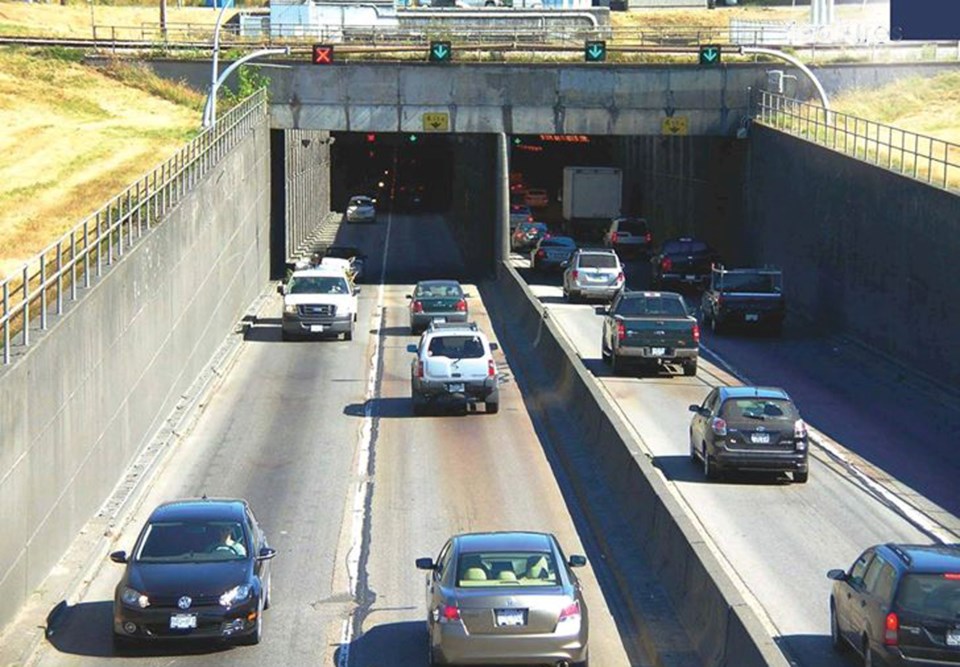A Vancouver company is using its record of providing an earthquake warning system at the George Massey Tunnel since 2007 to help market its equipment globally.
In an announcement on Tuesday (Sept. 27), Weir-Jones Engineering Ltd. said it has joined up with Mississauga, Ontario-based SGS Canada Inc. to begin selling ShakeAlarm systems to commercial and private property owners.
The technology can provide up to a 90-second warning of a pending earthquake by determining the magnitude before it hits.
“The Massey Tunnel is a unique platform, in that it was built long before seismic codes were an issue,” said Andrew Weir-Jones, operations manager at the Weir-Jones Group. “So, the concern was if there was a large seismic event, the tunnel would collapse.”
Using sensors buried into areas at either end of the tunnel, ShakeAlert can detect the two different waves earthquakes generate. The first, called a P wave is fast-moving and non-damaging that, according to Weir-Jones, the equipment can analyze in less than 200 milliseconds.
If it determines the strength of the P wave is sufficient enough for the following S wave, or shear wave, to do damage to the structure ShakeAlarm is monitoring, the device sends out a warning. And in the case of the Massey Tunnel,that would trigger a change to the red and green counterflow system’s overhead directional lights which ushers traffic daily during the morning and evening rush hours, switching the number of lanes heading in one direction from two to three through the four-lane tunnel.
The lights would switch from green to red at the entrances to the tunnel, then remain green inside to direct traffic to exit, Weir-Jones said.
Initially, the system was designed to incorporate the counterflow’s lane barriers, but that idea was not used due to liability concerns.
Since ShakeAlarm was installed at the tunnel in 2007, it has not issued a warning.
“Not once in nine years,” Weir-Jones said, adding that shows how accurate the system has been in monitoring the magnitude of earthquakes without issuing a false alarm.
“We have captured a number of events during that time, but none of them have been significant enough to shut down the tunnel,” he said.
The most recent example was the quake that shook many Lower Mainland residents late last year.
On Dec. 29, 2015, a 4.8 magnitude earthquake hit just 19 km north east of Victoria. That put its epicentre roughly 61 km from the tunnel — very close by geological standards, Weir-Jones said.
That meant the resulting P wave detected by ShakeAlarm at the tunnel resulted in a mere 10-second warning of the following S wave.
But since the system determined the quake would not have been powerful enough to cause damage, the counterflow lights remained unchanged.
“When a quake is virtually on top of you like that, there’s not much you can do, yet we still had a 10-second warning,” Weir-Jones said.
In other circumstances, depending on how far away the epicentre is, ShakeAlarm can give a warning of around 90 seconds. That’s been key for its customers, which Weir-Jones said includes Fortune 500 companies, plus nuclear power plants across North America.
For those customers, ShakeAlarm can be used to automatically shut down electrical connections, as well as gas and water lines using electromagnetic valves.
“Most of the damage from an earthquake can be attributed to fire and flooding that follows. So, we are helping customers mitigate the risk by shutting things down before the shaking starts.”
With Tuesday’s announcement, the two firms are hoping to bring ShakeAlarm to a wider audience, including regular homeowners. SGS was brought on board to handle the large, technical installations, such as chemical plants, airports and docks.
The average cost for a home-based system is around $9,500.
“We have built three generations of that initial technology used at the Massey Tunnel and now we’ve got a platform that can be deployed and managed by general folks, not technical people or engineers, in a wide variety of applications including homes, businesses, apartment and industry,” Weir-Jones said, adding the tunnel’s track record will feature prominently in their pitch to potential customers.
“It’s good because it’s a pubic system. And since it has been installed, it’s protected an estimated quarter of a billion users,” Weir-Jones said.



